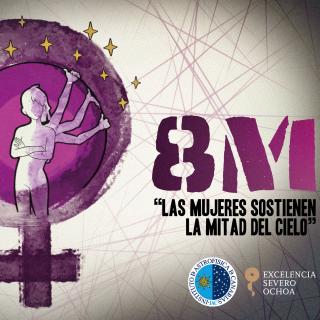Investigators David Martínez Delgado and Antonio Aparicio Juan, of the Stellar Populations group at the Instituto de Astrofísica de Canarias (IAC), have found evidence for the existence of young stars in NGC 185, a dwarf elliptical galaxy in the Local Group, of which the Milky Way is also a member. These results, based on observations carried out with the telescopes at the Roque de los Muchachos Observatory on La Palma, have been published in the Astronomical Journal. The observations in question offer the first solid demonstration that recent star formation has taken place in a dwarf elliptical galaxy and seriously challenge the commonly held view that this type of galaxy is populated only by old stars.
‘Dwarf elliptical galaxies, such as NGC 185, pose a complex and little understood problem that might even be said to have a "social" guise among astrophysicists,’ explains Aparicio, who heads the IAC’s Stellar Populations group, which has carried out the study. This is because these galaxies were directly involved in the construction of one of the key paradigms of the astrophysics of this century: the concept of stellar populations, introduced by Walter Baade (1893- 1960), an astronomer at the Carnegie Institute in Pasadena (California, USA). In the 1940s, Baade carried out a major synthesis of that imposed order on the chaos of apparently unconnected data in circulation among astronomers at the time concerning the properties of various types of stars in the Milky Way and other galaxies. As a result of this work, he introduced the concepts of Populations I and II. The latter essentially included the oldest stars, which were characterized by being very red. ‘One interesting aspect, which seemed at the time to be perfectly clear,’ says Aparicio, ‘was that there appeared to be objects that were composed exclusively of Population II stars, and that among these objects were the dwarf elliptical galaxies.’
In 1944, Baade himself had realized that there were some blue (young) "stars" in the nuclei of some dwarf elliptical galaxies, and specifically in that of NGC 185. According to Aparicio, this presence was seen to be at odds with a Population II object and was a "disagreeable" exception to the ordered scheme of populations. Baade explained it away as an "impurity" and left it at that. Even stranger, the astronomers who succeeded him in the study of these galaxies continued in the same manner without paying much attention to this "impurity".
Researchers at the IAC began to study NGC 185 in 1996, using the Jakobus Kapteyn Telescope (JKT) and Nordic Optical Telescope (NOT) at the Roque de los Muchachos Observatory. ‘We identified Baade’s supposed blue "stars",’ explains Martínez Delgado, ‘but there was a problem. If these objects were really stars, they had to be very luminous, very massive and therefore very young (less than 10 million years old). That implied two associated phenomena: first there had to be a great quantity of gas, which, however, was not the case, and second these massive stars had to be accompanied by a great number of intermediate-mass stars, which were nowhere to be seen. These two puzzles remained unsolved and resulted in the problem being temporarily shelved.
What has become clear from the new study is that the blue "stars" in NGC 185 are in fact star clusters, which, given their distance from us, appear practically point-like. According to the IAC team, this confused Baade, in whose photographic plates, the clusters were indistinguishable from stars. ‘And so we have solved the problem,’ says Aparicio. ‘The clusters are made up of thousands of stars, which no longer need be so luminous or therefore so massive or young: their combined luminosity is now sufficient to account for the total luminosity of the clusters, which is what we observe. Each star can be thousands of times less luminous than Baade supposed. Consequently, their ages turn out to be some hundreds of millions of years and their masses moderate. Neither is the presence of large quantities of gas necessary, since this would have been expelled long ago.
On the one hand, this result confirms the suspicion that dwarf elliptical galaxies do not merely comprise very old stars, and that star formation has therefore recently taken place. On the other hand, adds Aparicio, ‘the stellar clusters we have found are a trace of the last star formation episode that occurred in NGC 185, hundreds of millions of years ago (in comparison, the age of the galaxy and its oldest stars is some 10 000 to 15 000 million years). They are a reliable indication that star formation in these galaxies has continued into recent epochs and therefore that the Populations I and II scheme is over simplified.’
MORE INFORMATION: Antonio Aparicio. Tel.: 922605245, 922273541 or 696462597.


